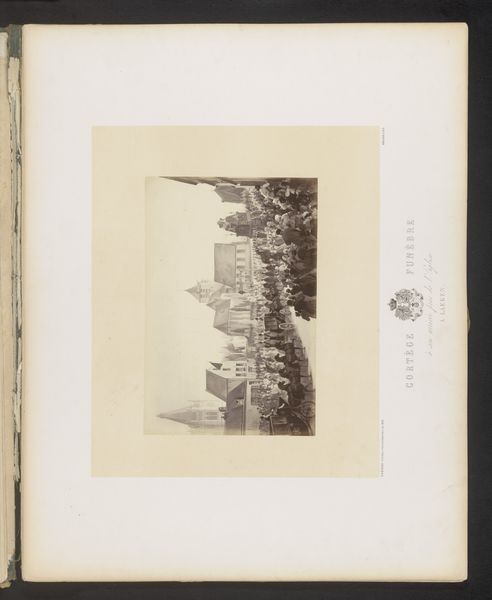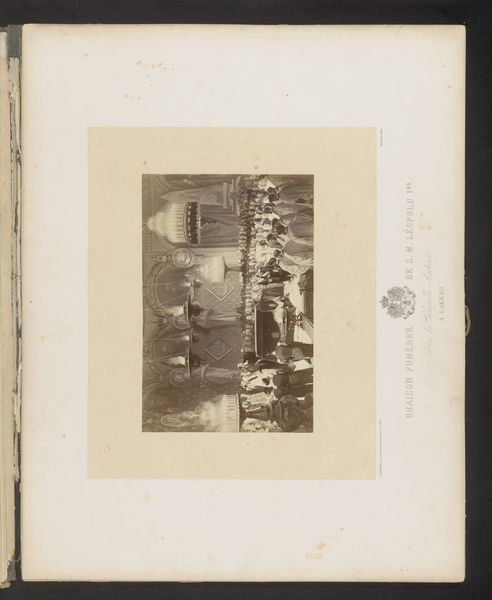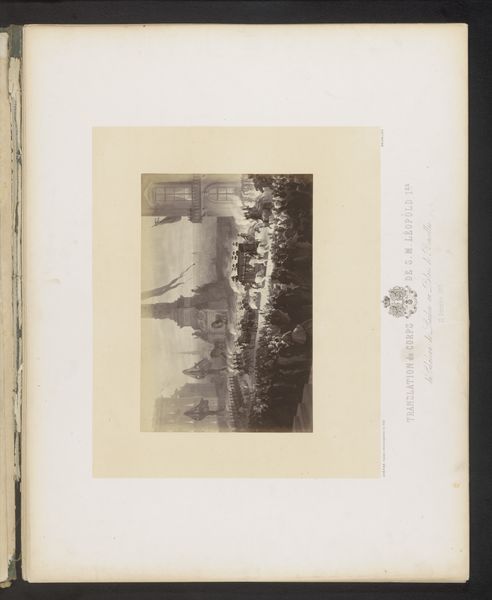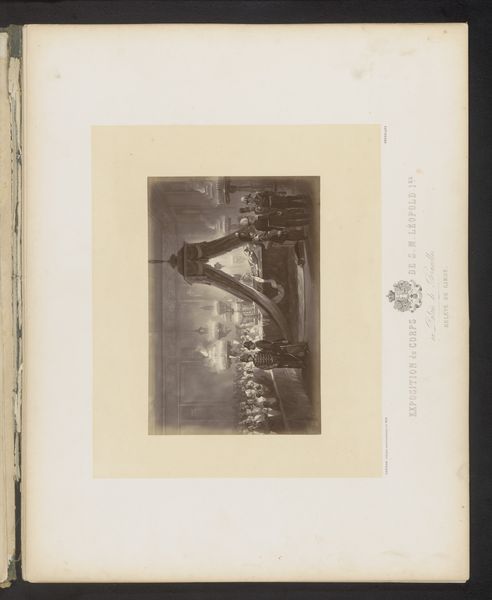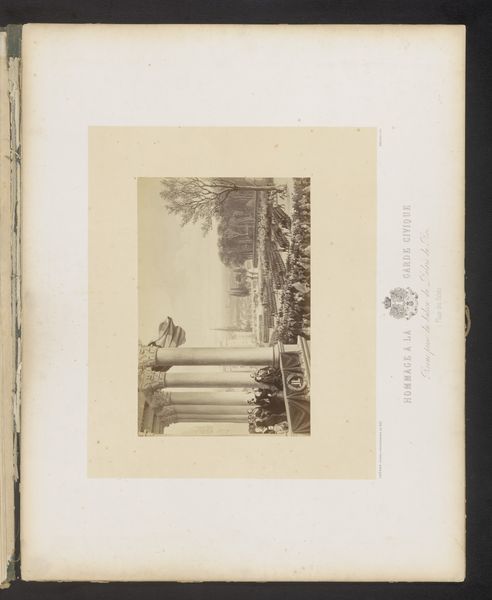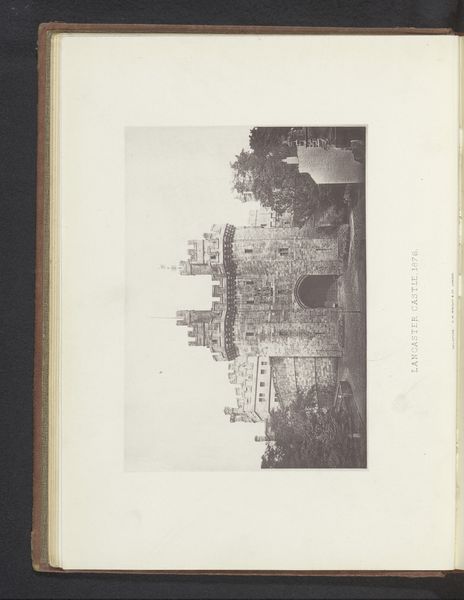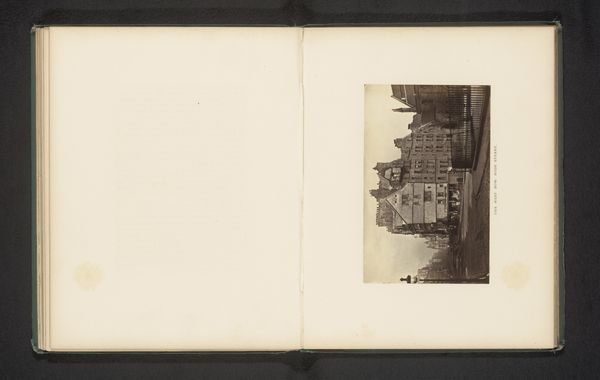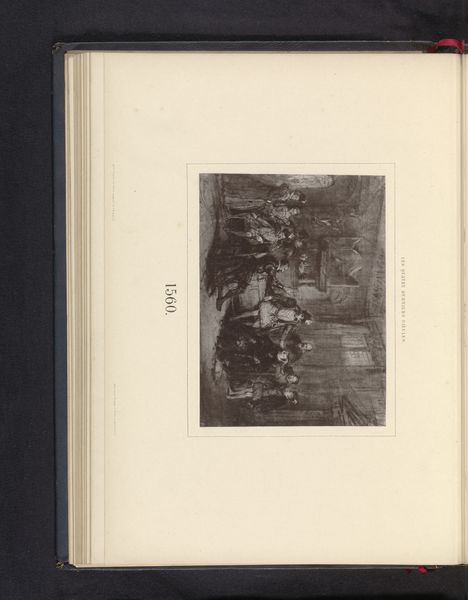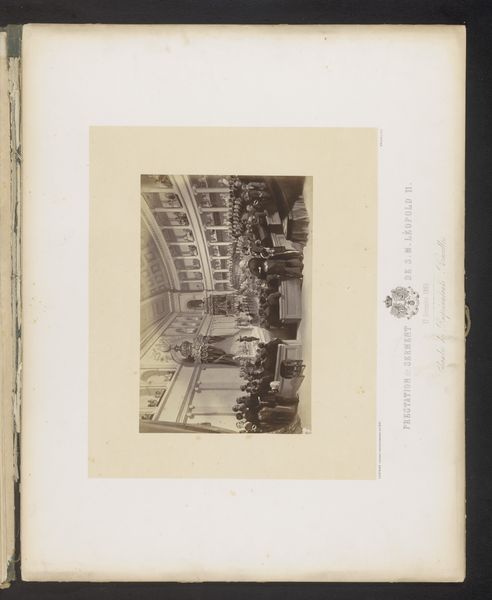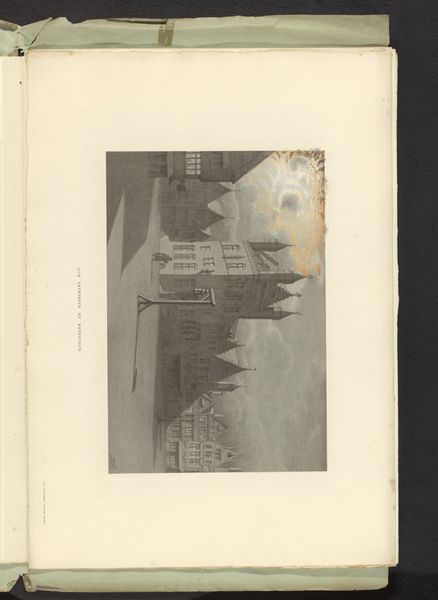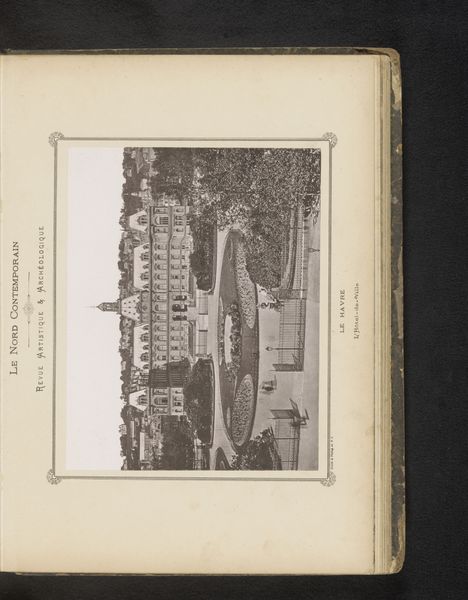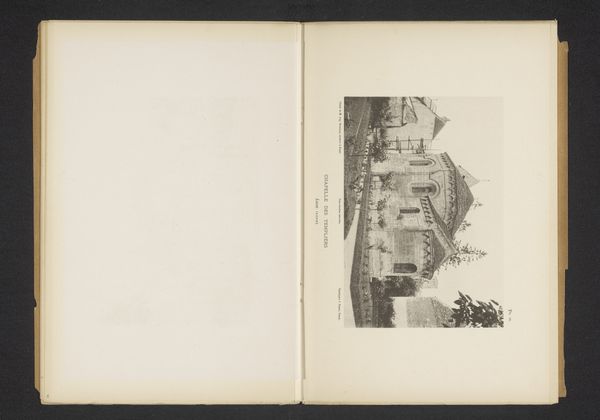
Fotoreproductie van een ontwerp van de begrafenisstoet van koning Léopold I van België in Brussel before 1866
0:00
0:00
ghemarfreres
Rijksmuseum
Dimensions: height 166 mm, width 250 mm
Copyright: Rijks Museum: Open Domain
Editor: This is a photographic reproduction of a print, specifically an etching, depicting the funeral procession of King Leopold I of Belgium. It was made before 1866 by Ghémar Frères. The somber, crowded composition really gives you a sense of the scale of the event, and its inherent drama. What strikes you about this piece? Curator: What intrigues me is the layering of image production techniques – photography reproducing etching. Think about the skilled labor involved at each stage: the draughtsman etching the original plate, the photographer, and the printer. Each process introduces its own materiality. How does the photographic reproduction change the meaning or accessibility of the original etching? Editor: That's a great point. By reproducing the image through photography, does it democratize access, making the image available to a broader audience, or does it become further removed from the "aura" of the original etching? Curator: Exactly! Consider the social context. Was this mass-produced to promote royal power or serve as a memento for citizens? Were the etching and the subsequent photograph luxury items or widely affordable? Who would have purchased these? Understanding that economic exchange gives us a deeper understanding. Editor: So, it’s about seeing art as not just a historical record, but also as a product of various production methods shaped by specific social and economic forces? Curator: Precisely. The materiality reveals the methods of its production and consumption, connecting the artwork directly to labor, class, and power structures. Editor: That makes me see the image in a totally different light, recognizing how much the production process shaped not only the visual outcome but also its social impact. Curator: And it also opens up questions about originality, authorship and value in art. Materiality allows a fascinating critical entry point.
Comments
No comments
Be the first to comment and join the conversation on the ultimate creative platform.
